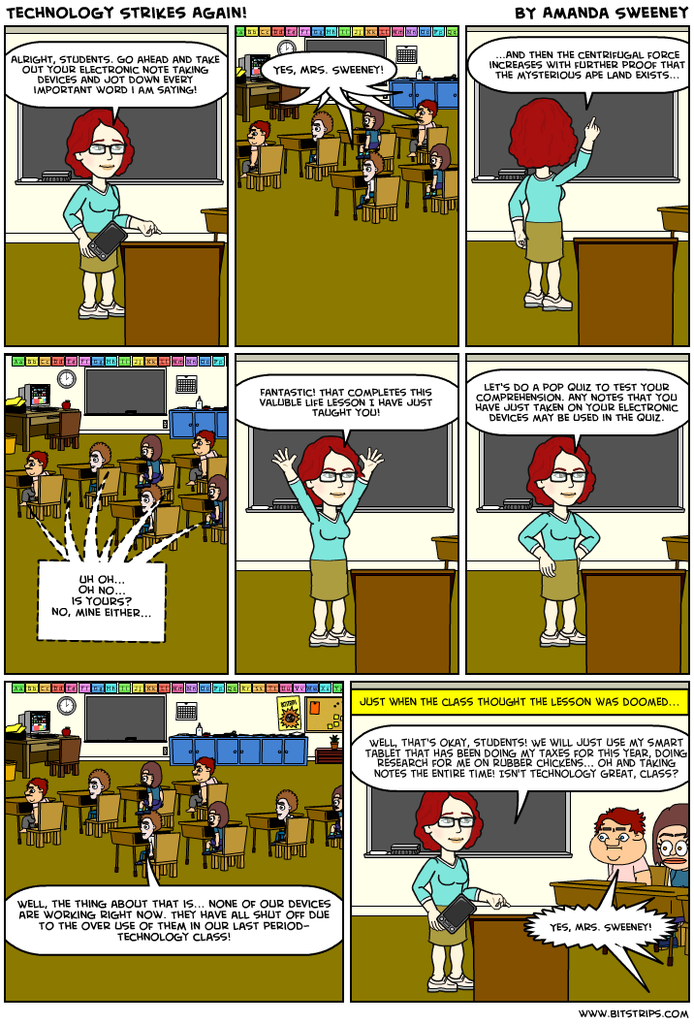(Made by Amanda Sweeney via StopMotion app for iPhone)
Going into this class my level of comfort with technology was poor. Ten years ago, in my high school days, I was above most everyone else- I was able to blend HTML codes together to create off line websites and was keen to the most recent technology software’s and online content. This knowledge had faded over time as my use with computers (real computers- not just my iPhone) became less and less. At the beginning of this semester if I were to be asked what online website I could create content with- I wouldn’t know the answer. I would probably guess Facebook, and even Facebook I am not 100% comfortable with anymore because they keep changing the darn thing. With this EME-2040 class, I feel my general knowledge of technology as well as ability to create original online content has flipped entirely.
(Made by Amanda Sweeney via StopMotion app for iPhone)
So many of the learning outcomes in our syllabus have left a lasting impact on me as a future educator. Using technology to promote success in the classroom was one of my favorite modules this semester. It opened my eyes to the vast ability that technology has for incorporating all types of students into the curriculum, and also reminded me that I will likely be faced with such challenges. The exercise where we had to create a fictional student with some kind of prevention of typical learning, such as blindness, deafness or a non-English speaking individual, and provide various ways to reach them in the classroom, was a lot of fun and very informative. Another one of my favorite learning outcome was our final: creating a portfolio. It opened up so many ideas for me in the future to best connect with parents and students outside of the classroom. All of the larger projects that went into the portfolio, such as the web quest, inquiry-based lesson plan and the wiki page were also some of my personal favorites.
My absolute favorite outcome of this class has been that I, as a person, am far more comfortable with experimenting with the technology that exists on our wide world web than I was at the start of this semester. I credit this fact to Professor Coleman- who not only introduced us to a massive amount of valuable online technology to use in our careers, but also require that we “played” with it. From our discussion posts to our blogs, our website portfolio and our wiki project- we were required to incorporate some form of technology into what we were doing. This forced me to use it, figure it out and finally master it for a final product. For this confidence to get back into the technology pool, I am deeply grateful. Professor Coleman clearly took time to not only put together the modules that were available to us, but all of the little details in the modules should not go without mention- all of the additional explanations in parentheses, highlights to draw attention to important information within the module/assignment and finally the several date reminders and encouraging announcements that made Professor Coleman feel ever present in the online classroom- all of these (and many more!) made for an excellent learning atmosphere. The singular thing that I would suggest changing is the modules being locked until a certain date. This only became an issue for me when I was anticipating being on a vacation and not wanting to complete assignments away from home. I worked through it fine enough, but that would be the singular thing I would change about this class.
I think it has been clear in this post that I loved this class. There is something for every educator (whether current or future educator) in the EME 2040 class, and I am so thankful to have taken it!
(Made by Amanda Sweeney via Canva)
Resources:
Sweeney, A. M. (2016, May 2). Heart [Love for Web 2.0 tools]. Retrieved May 3, 2016.
Sweeney, A. M. (2016, May 2). Introduction [Intro]. Retrieved May 3, 2016.
Sweeney, A. M. (2016, May 3). Marzano Quote [Quote from Robert Marzano]. Retrieved May 3, 2016, from https://www.canva.com/design/DAByNKqqJ5Y/dv9Ee-0z0aybBCwSi1hrTA/view?utm_content=DAByNKqqJ5Y&utm_campaign=designshare&utm_medium=link&utm_source=sharebutton
Sweeney, A. M. (2016, May 2). Overhead Bubble [Thoughts of digital media before EME2040 class]. Retrieved May 3, 2016.











